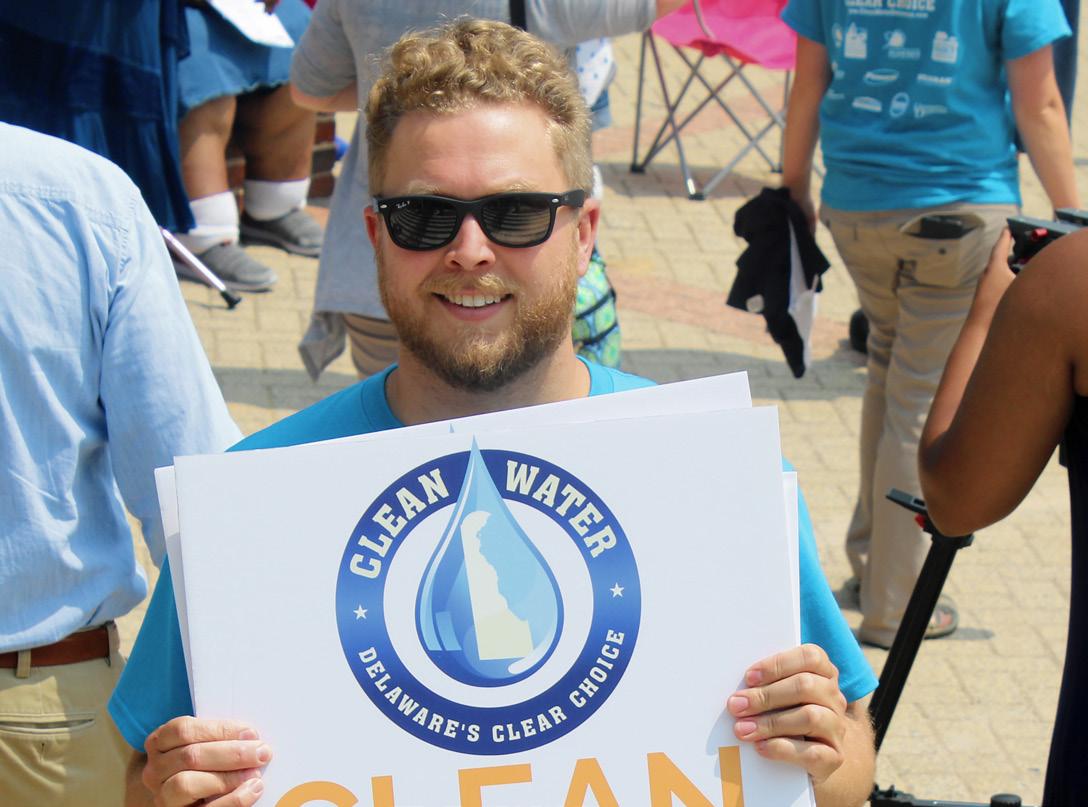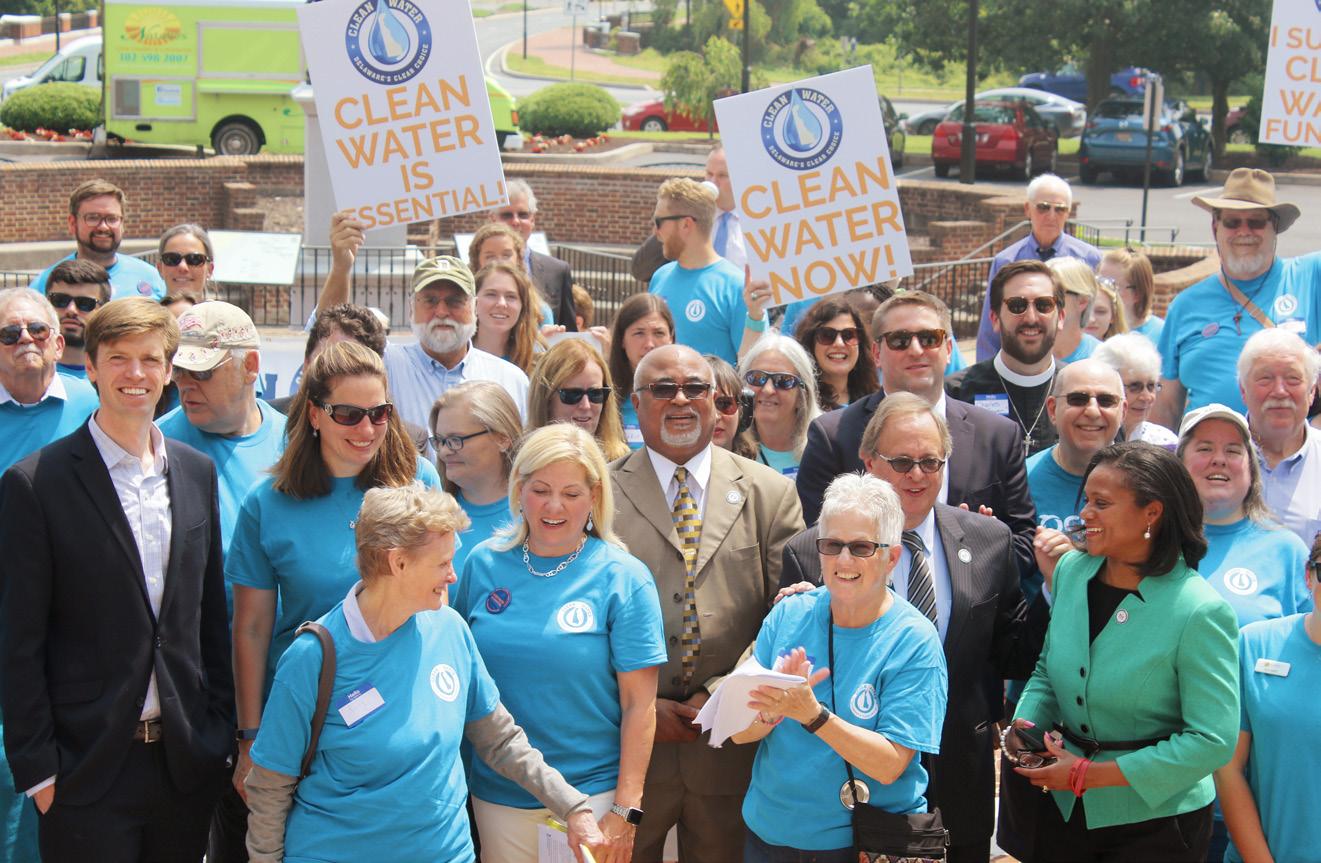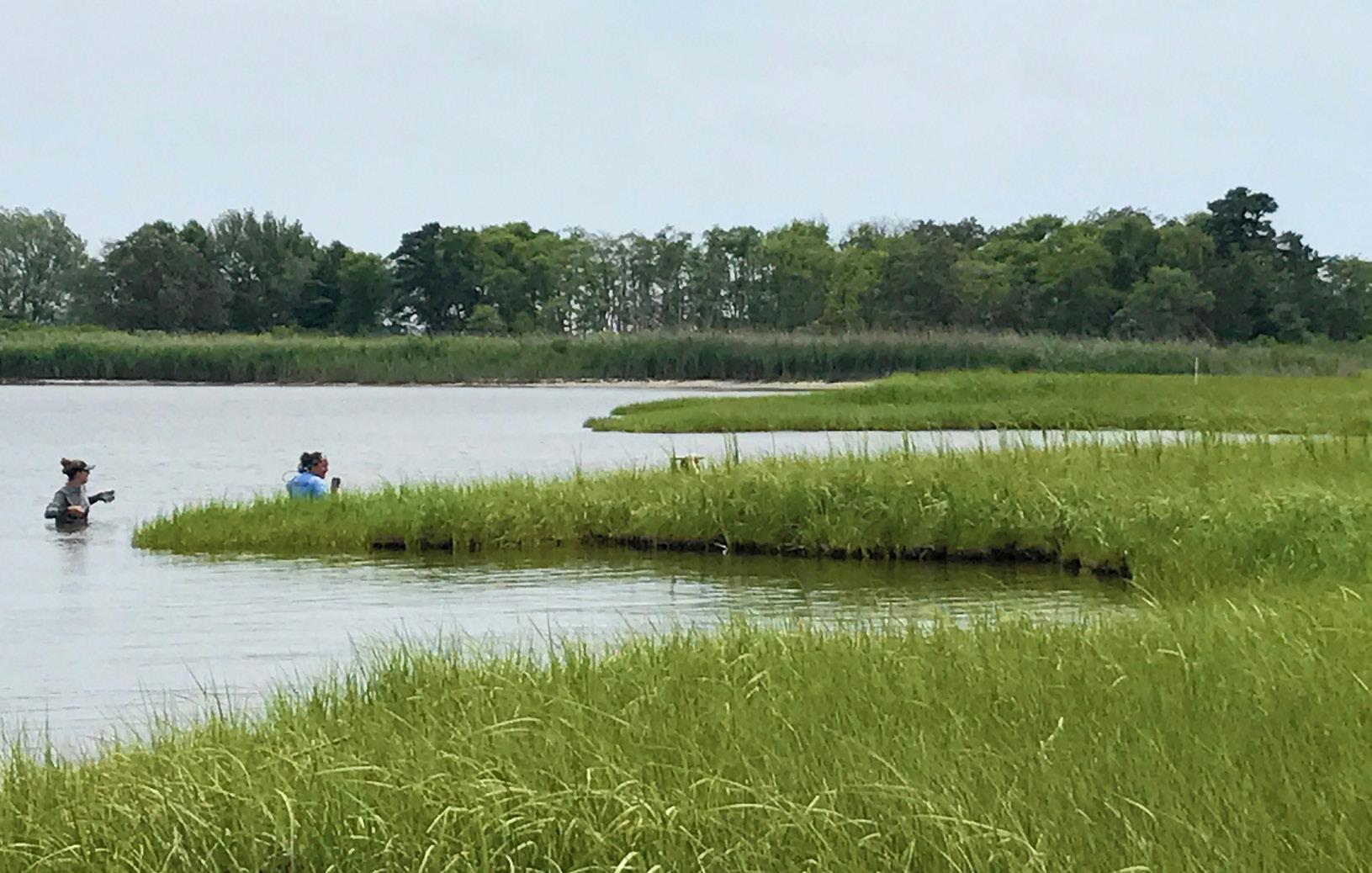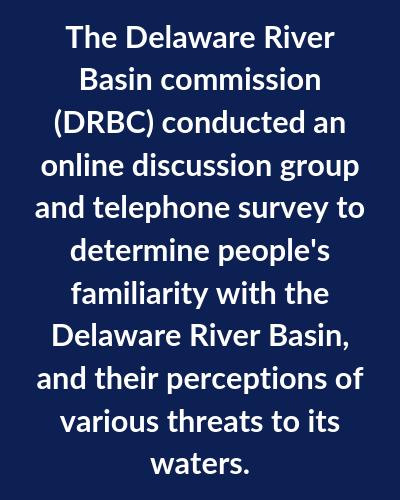
6 minute read
Five Years of Clean Water Rallies
Five Years of Clean Water Rallies Have Opened a Stream of Results
By Kate Layton, PDE Marketing and Communications Manager
Advertisement
On June 5, Brenna Goggin stepped up to a podium and addressed more than 125 advocates for clean water.
“Five years ago, many of you started on this journey with us, and progress was made,” Goggin said of the Delaware Clean Water Alliance’s ongoing push for clean water legislation.
Goggin, who was a member of the Alliance’s steering committee and the Director of Advocacy and External Affairs for the Delaware Nature Society, spoke at the annual Clean Water: Delaware’s Clear Choice Campaign rally outside of Legislative Hall in Dover, Delaware. Collin O’Mara, CEO of the National Wildlife Federation, Delaware Representative and House Majority Leader Valerie Longhurst, Delaware Senator Pro Tempore David McBride and Delaware Senator Bryan To wnsend also spoke.
“Each year, we get a little closer to accomplishing our goal,” Goggin said in the days following the rally. “So far, we have been successful in establishing the Clean Water and Flood Abatement Task Force that completed its goal of identifying the breadth of issues facing Delaware’s waterways as well as identifying a
Water Warriors came out June 5 for the fifth annual Clean Water: Delaware’s Clear Choice Campaign rally in Dover, Delaware. funding mechanism that would address it.” House Bill 200, introduced this year, asks to earmark $25 million per year of already existing funds for drinking water testing and clean water/flood reduction projects. The bill went to the Delaware House of Representatives floor on June 5 and was reassigned to the House Appropriations Committee. The bill will have to pass out of that committee before it can return to the House floor for a vote. This year’s Bond Bill, a section of Delaware’s budget, alloted $20 million for clean water funding. Of the $20 million earmarked for clean water funding, at least $1.6 million must be spent to improve access to clean drinking water in underserved communities. PDE is a member of the Clean Water Alliance, and staff members attended the June rally as advocates for clean water. “Rallies can be essential to moving the needle on an issue,” Townsend said. “Five years of rallies are just a start, and I think the group is to be commended to have the organizational ability and the verve to keep the rallies going. I think people should take heart at the introduction of new legislation that has a better chance of A Water Warrior shows his support for clean water in Delaware. passing."S

PDE Undergoes Five-Year Evaluation
By Kate Layton, PDE Marketing and Communications Manager
Every five years, each of the 28 National Estuary Programs (NEP) receives an evaluation. This evaluation involves a written report as well as a site visit to see programs in action.
As the host the Delaware Estuary Program, the Partnership for the Delaware Estuary (PDE) underwent a site visit from April 30 to May 2. PDE turned in its written evaluation earlier in the year, and welcomed representatives from the Washington, D.C. office of the Environmental Protection Agency (EPA), as well as EPA representatives from Region 2 and Region 3. It also welcomed the Executive Director of the Piscataqua Region Estuaries Partnership out of Durham, New Hampshire. Each day, PDE’s Interim Executive Director Kathy Klein and staff gave presentations to the evaluation team and led field trips to program sites within Pennsylvania, New Jersey and Delaware.
In Philadelphia, the program evaluation team observed PDE’s freshwater mussel program in action at the demonstration mussel hatchery housed at the Fairmount Water Works Interpretive Center. Team members toured the Camden County Municipal Utilities Authority in Camden, New Jersey, as well as the adjacent Phoenix Park to view a living shoreline project.
Other site visits and activities included a field trip to PDE’s shell recycling center in Wilmington, Delaware to see where PDE stores donated oyster shells for use in living shorelines projects and a trip to First State Montessori Academy to help install street art stickers. Two students from the school produced winning drawings in the Clean Waterways Wilmington Student Art Contest, a

Program evaluation team members helped install a sidewalk sticker in front of First State Montessori Academy in Wilmington, Delaware. program in which PDE partners with the City of Wilmington. In the contest, first place drawings are turned into street art featuring pollution prevention messages. PDE looks forward to talking about the organization’s growth and productivity during its next evaluation in 2024.S
PDE staff and members its program evaluation team toured the Camden County Municipal Utilities Authority (CCMUA) and adjacent Phoenix Park in Camden, New Jersey during its evaluation. Credits: Partnership for the Delaware Estuary

Estuary Tidal Marshes are Seeing Losses and Gains
Mine and Yours: Abandoned Coal Mine Drainage is a Pollution Source in the Schuylkill
By LeeAnn Haaf, PDE Wetland Coordinator
By William Reichert, President, Schuylkill Headwaters Association
Lush, expansive tidal marshes support good water quality, buffer coastal communities from storm damage, and provide habitat for wildlife. Sea level rise due to climate change, human encroachment and other factors have eroded thousands of acres of marshland. With effort, we may gain some of it back. According to PDE’s Technical Report for the Delaware Estuary and Basin (TREB), the Delaware Estuary lost more than 2,700 acres — 194 acres per year — of tidal marshland from 1996 to 2010. Although
Countless miles of abandoned coal mines and tunnels lay silently under Pennsylvania. Today, drainage from these vacant burrows is the largest source of pollution within the headwaters of the Schuylkill River. The health of the Schuylkill is better than it used to be, and the river can be enjoyed for boating and fishing. And with the help of partners and grant funding, more work

cont’d on p13
Wetlands provide many environmental benefits within the Delaware Estuary. Between 1996 and 2010, the Delaware Estuary lost more than 2,700 acres of wetlands.
Abandoned mine drainage is the top pollution source in the Schuylkill River Watershed. Remediation projects, however, are addressing this problem.

cont’d on p13
SURVEY FINDINGS DRBC Survey Hopes to Get Water on the Public’s Mind

By Peter Eschbach, Director, External Affairs and Communications, Delaware River Basin Commission
The Delaware River Basin commission (DRBC) wants to find out how much people value area waterways.
With approval from its commissioners, the agency earlier this year began a William Penn Foundation-funded project designed to increase public awareness of the Basin’s value.
Through education and outreach, the DRBC hopes to get people more involved with the Basin, not just recreationally, but through cleanups, becoming members of organizations to protect the Basin and talking to elected officials about protecting waters within the Basin.
To get started, the DRBC did some research. In April, the agency conducted an online discussion group to determine audience familiarity with the Delaware River and Basin, as well as analyze perceptions of the different threats to the Basin’s waters. Next, was a June telephone survey of 602 respondents who live in states within the Basin.
The telephone survey asked a variety of questions, such as if people think water in the Delaware River Basin is cleaner, dirtier or the same as it was 50 years ago, and whether they would be willing to take action to protect the Delaware River Basin, such as by contacting elected officials, signing a petition, posting on social media or volunteering for a cleanup.
Here’s a sample of what the agency learned: ¾ The Delaware River is well liked, but it is perceived to be dirtier than 50 years ago. ¾ There are major concerns about the impact of pollution and climate change on the
Basin. ¾ Plastic trash,
Credit: Map of the Delaware River Basin courtesy of the Delaware River Basin Commission



